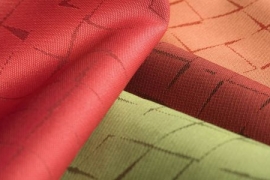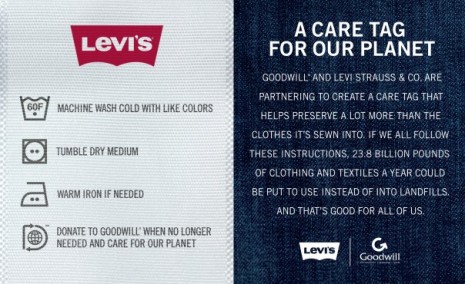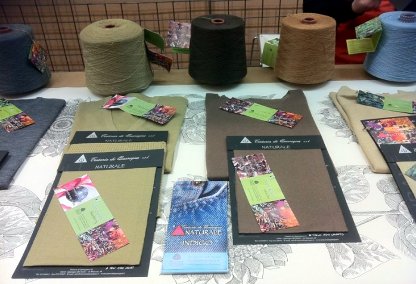 In 2012, we have seen risk management and sustainability play a more important part in the agendas of leading fashion brands. Nevertheless, many companies still perform poorly at many stages of their supply chain and are unaware of the risks, particularly if they lie beyond their direct operations. We know that the bigger (specifically environmental) impact, lies at the very beginning and end of the supply chain. For instance, H & M assessed the impact of their cotton products and found out that 34% of greenhouse gas emissions are generated at the fibre and spinning stages, while 39% at a consumption level (17% ironing, 9% drying and 13% washing). As a result of this, we can already see signs of fashion brands starting to focus on initiatives aiming to reduce their impact at both ends of the supply chain.
In 2012, we have seen risk management and sustainability play a more important part in the agendas of leading fashion brands. Nevertheless, many companies still perform poorly at many stages of their supply chain and are unaware of the risks, particularly if they lie beyond their direct operations. We know that the bigger (specifically environmental) impact, lies at the very beginning and end of the supply chain. For instance, H & M assessed the impact of their cotton products and found out that 34% of greenhouse gas emissions are generated at the fibre and spinning stages, while 39% at a consumption level (17% ironing, 9% drying and 13% washing). As a result of this, we can already see signs of fashion brands starting to focus on initiatives aiming to reduce their impact at both ends of the supply chain.
The following are the the main trends we see happening in the near and mid future. A few exist already but will become substantially more pronounced; others are just about to emerge and hit the surface of public awareness.
More Investment in Innovative Textiles

More and more companies are investing resources into researching alternative fibres and textiles. With an expected decrease of cotton production in 2013/14 to 23.2 million tonnes (smallest output for 4 years) and organic cotton still representing only 1% of the global fibre production, fashion players are looking at alternatives. Not the least because it is clear by now that organic cotton is by far not the most sustainable option available. A lot of research will go into creating textiles that are fully recyclable with closed loop processes. Hence, we will see more fibres like recycled polyester, polyamide or cotton and other organic natural materials like hemp or linen. Biodegradable fibres will also be in the spotlight, but there are still some technical obstacles to overcome as Patagonia explains on their website.
Mainstream textile trade shows will increase their offer of innovative textiles to make the job of fashion houses easier. Messe Frankfurt has, for instance, been investing in this area since 2007 in September 2012 80 exhibitors showcased their sustainable textiles at Texworld in Paris. Munich Fabric Start, a much smaller event, launched an “organic selection“ at their last edition, where they presented certified fabrics with social and environmental proven credentials.
These products are normally presented in dedicated areas and “alternative textiles paths” are offered to visitors to find them more easily. The aim of these trade show organisers is to also educate buyers on existing material options and certificates. Future Fabrics Expo, the sustainable textiles event taking place at London College of Fashion for the last two years, has succeeded in educating its visitors by creating boards explaining sustainable processes (e.g. recycling) in detail and sharing best practices.
More Initiatives Aimed at Changing Consumer Behaviour

Brands know that their impact at a product use level is enormous, but that it is also very challenging to influence their customers’ behaviour. There is an attitude behaviour gap, i.e. a gap between what consumers say and what they actually do.
According to research, 53% of consumers worldwide would pay more for products produced in a more responsible way and nearly 66% of consumers say that they believe that we should consume less and better in a survey conducted in 6 countries.
On the other hand we know that 2.15 million tonnes of new clothing and shoes are bought each year in the UK and over 1.4 million tonnes of clothing are sent to landfill.
What is the solution then? Increasingly, brands share the opinion that they need to incentivise their customers to act differently by making more sustainable behaviour easy and sexy. How? Marks & Spencer’s pioneering initiative, Shwopping, and before that, their collaboration with Oxfam have shown that consumers may need a small, possibly tiny, monetary incentive to make the effort.
Others have since followed. The other insight is: responsible consumption should be made as easy as walking. For instance, after a pilot project in Switzerland, H&M has announced that they will be able to collect and re-use garments from their customers in return for a shopping voucher in all 48 countries they have stores in.
And Puma makes it really easy for their customers to feel good about themselves with their Bring Me Back campaign, through which they collect garments and shoes (of any brands) that cutstomers bring to their stores.
More Attention on How Garments are Dyed After the Greenpeace Detox Campaign

The Greenpeace research and Detox Campaign is far from being perfect, but it has raised awareness of the risks and impacts of wet processing of textiles and garments. There have been mixed reactions from brands to the campaign. Zara signed up to Zero Discharge Roadmap, whereas the Danish Bestseller Group announced that they won’t collaborate with Greenpeace on these issues.
This is a very challenging area of the textile supply chain, and the reaction of fashion brands will be diverse. They might partner with pioneering dye houses that have developed natural dyeing processes and help scale them, or we might see the development of colour free collections with the use of, for instance, naturally coloured (pigmented) cotton.
This said, the very first challenge will be at an assessment level to fully understand the environmental and social impact that wet processing has.
After dye houses, it is the leather industry that will be the next big campaign target
Video: Situation of the Bangladeshi leather industry, documented by Human Rights Watch.
Medieval European cities used to keep tanneries and their offensive smells outside their walls, by law.
Now, because of the demand for luxury at the cheapest possible prices, the industry is pushed out to where it is easier to ignore the moral reek. The global campaign organisation Human Rights Watch published in October their report entitled ‘Toxic Tanneries‘, focused – by way of example – on the status of the Bangladeshi leather industry.
Their insights are thoroughly sobering. Just like Greenpeace did with their Detox Campaign to focus the world’s attention onto the situation of dye houses, we can expect hence for a similar push focused on tanneries world wide.
What Other Initiatives May We See?
- More and more brands will consider offering a repair service, similar to the one offered at Home of Millican. This increases the perceived value of a garment as people think that they are buying good quality products. In addition, this encourages more customer loyalty whilst the brands are able to make money by providing such services.
- More sharing and swapping platforms. The sharing economy is evaluated to be worth £22 billion in the UK and an increasing number of sharing platforms are emerging. Example are Uniiverse, Yerdleand and Patagonia’s platform within Ebay, as part of their Common Threads Initiative. These sharing platforms are fun and money saving.
- Closed loop manufacturing processes and technologies will become more dominant, and even part of the mainstream discussion, thanks to renowned organisations such as the RSA actively (‘The Great Recovery‘) promoting and researching it.
- Innovation will also come from processes that aim at reducing the usage of water. Forecasts and scenarios state that by 2030 water will likely be scarcer than oil. For a water-intensive industry such as fashion, which uses millions of litres in even basic process, from growing to dyeing and washing, this is bad news. As a consequence companies are already now starting to innovate.
- At the back of the European economic crises, consumers will become more pragmatic in their purchasing behaviour and will reward better brands that are able to ensure product quality and durability. Sustainability will increasingly play a role, too. More interestingly, the same applies also for geographies that are not that hard hit by the West’s economy woes.
- In the UK, but also other Western geographies, manufacturing locally will increasingly become a major topic in the industry as both, the government and leading brands like M&S are trying to assess the feasibility of bringing back part of the textile and clothing production. The issue though is that, given the lack of public money available for such pursuits, the implementation will solely be up to the private industry. Whether or not this is a good thing, only the future will show.
- Pioneers will make a business case for sustainability and good risk management by being able to offer their goods at lower prices than those of their non-sustainable competitors. The fact that they know their operations more in depth, will open up new worlds and perspectives of both, consumer interactions and supply chain improvements.

